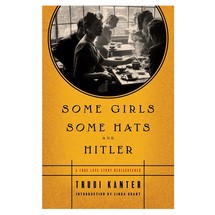Who doesn't love buried treasure, especially when it's of the literary variety? Part love story and part intimate history of the Nazis' 1938 arrival in Vienna,
Some Girls, Some Hats and Hitler was originally released—and promptly forgotten—in 1984. Wandering through a bookshop a few years ago, a British editor discovered the out-of-print memoir and decided to republish it. What makes the book so instantly mesmerizing is Trudi Kanter herself, who fashioned sentences just the way she fashioned hats as a milliner in late 1930s Vienna—each a dazzling, delicate object of delight. When Hitler overruns Austria, there is plenty of tension to draw the story forward: Jews are forced to wash the sidewalks with acid, her husband, Walter, is hunted by the SS, and Kanter must find visas that will allow them to escape to England. But what distinguishes this particular tale is the lavish portrait of Vienna just
before the war, back when people went to cafés for "elevenses, delicate snacks and pastries with cream," and Sunday afternoon dates took place in forested gardens under chestnut trees. Her yearning for this vanished life creates the kind of dark, dreamy melody that causes you to fall for this lost Vienna too. And yet, Kanter is aware of what this era was built on. "The poor were getting poorer; the rich, richer," she announces in retrospect. In 1935, "hats became smaller and smaller" until "a feather and a sequin was a hat." In 1938, that age of decadence ends with the arrival of the Nazis. Kanter escapes the atrocities in her hometown but not its devastating losses—including her own young, dazzled way of looking at the world from that time when, as she describes, "Kisses fly in all directions. I try to catch them in my green butterfly net."


